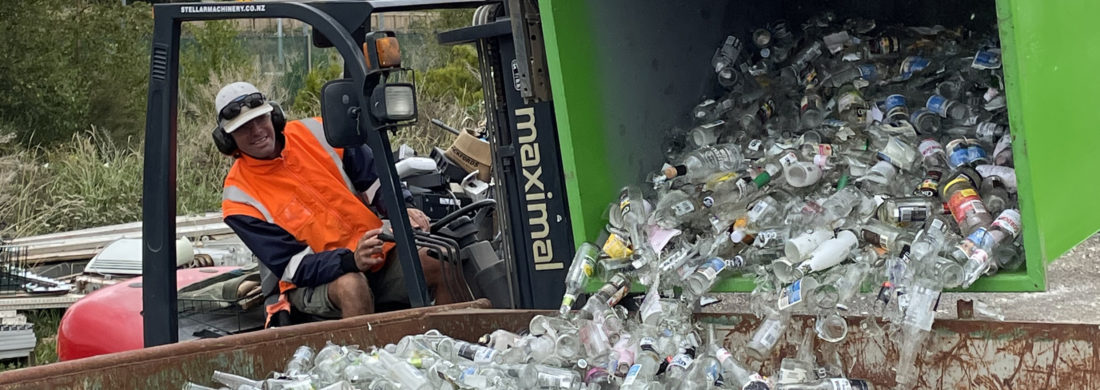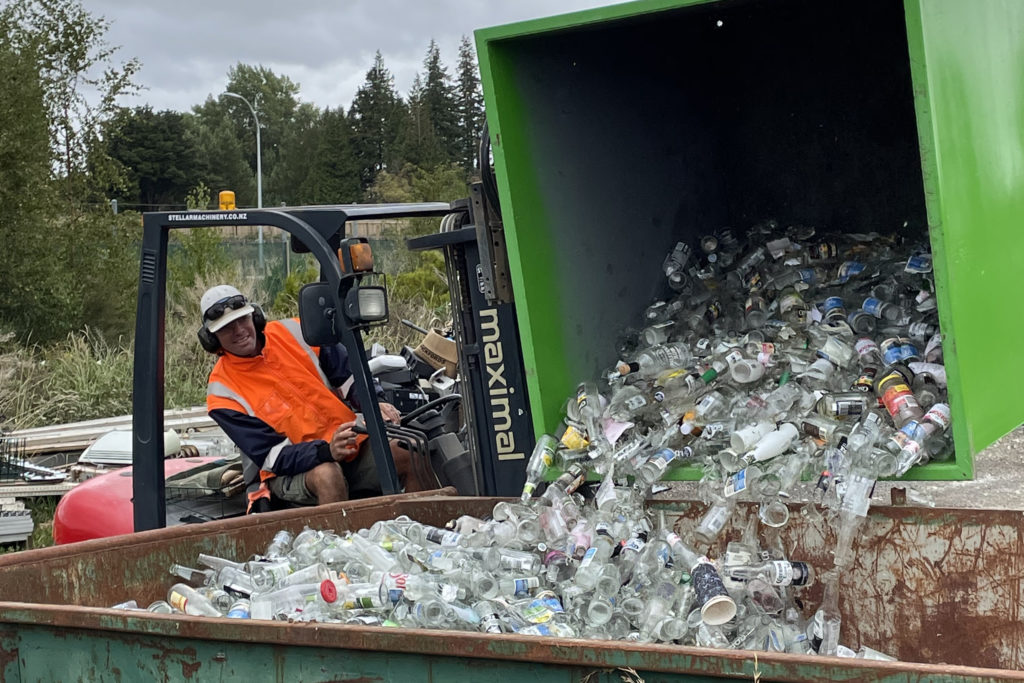
Glass heroes – saving resources and creating employment

Sam Gray is the owner of Ethical Waste, which has the site management contract at Waimarino Recycling Centre in Ohakune. Since taking over the contract 10 months ago Sam and his team have been working hard to improve recycling, waste diversion and sustainability in general, with great results so far.
Tell us a bit about Ethical Waste
It’s a social enterprise that manages the Waimarino Recycling Centre and which aims to recover resources and create jobs. We generate income from keeping items out of landfill and then on-selling them from our shop.
In the last 10 months we have increased our diversion rate by about 20% and have gone from two staff to six.
How did you improve the diversion rate?
Our staff have been talking to the public, when they come on site, about their waste and alternative places to put it other than landfill.
For example, with glass there would be a lot of events in town which would see the glass go to landfill. Now they come and talk to use about it and that glass now gets recycled. So, a lot of it’s just about conversations – educating people about the options other than landfill and building relationships.
What were some of the challenges?
The facilities here weren’t set up to be waste minimisation or a resource recovery centre, they were set up as a transfer station. So, storage and space has been some of our biggest challenges because once you keep things out of landfill you have to keep then clean and dry.
How did the recent GPF grant help you with your work?
We were able to make up some educational boards about waste diversion to place on site. We are also moving them around the district, so they are seen by as many people as possible.
The forklift which the grant helped buy has helped us better refine the waste streams and put them into smaller bins so we can remove contamination. I believe when people see a clean waste stream it’s easier for them to understand it and they are less likely to put contamination in there – if they are looking at beautiful clear, white bottles they are less likely to throw a brown one in there.
How is the glass recycling situation now?
We are noticing a lot less glass going to landfill – hardly anything. If we do hear it go in, we can either pull it out or talk to the person and educate them.
The culture around recycling has changed. Before it was rubbish is rubbish – you put it in the bin and in the landfill and that’s it. Now people are buying recycling bins and making sure it goes in the right place. Recycling has become normalised.
For us education was simply explaining that colour separation was important because they constantly saw it mixed. But now when you have nice signage around you it makes a big difference.
We can also pull reusable crate bottles out and put them into the shop. So, instead of the glass going to be melted and remade into new bottles those bottles can continue to be used.
What was the glass recycling situation before you took over?
There was colour separation, but it wasn’t monitored, no one was spending any time talking to the public about what they were doing.
There was also no signage so people had to look in the bins to see what colour glass should go in. So, we also used some of the grant to make signage for the glass recycling bins.
What are your future plans for glass recycling on site?
I’m looking at a safer system where there are chutes that you put the glass down. I want to use a ski lift seat which people can put their glass container on and the chutes for the glass will be in the back of the seat, with educational signage along the top of that. It’s a good way to integrate the centre with the centre as this is a ski town.


